Visiting Las Peñitas
Posted by Kevin Cuddeback on 12/01/2015
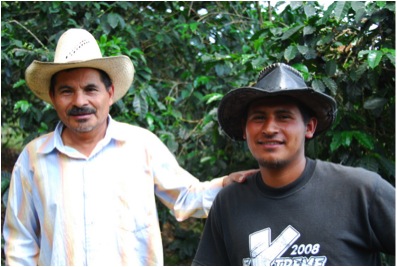
This is Jorge Benitez (right) and his father, Natividad. Jorge's farm produces Las Peñitas, a coffee we've been buying from the Santa Barbara region of Honduras for 3 years. Jorge's crop was coming in (aka ready for picking) when I visited in mid-March. His father helped with picking in order to get the fruit in on time.
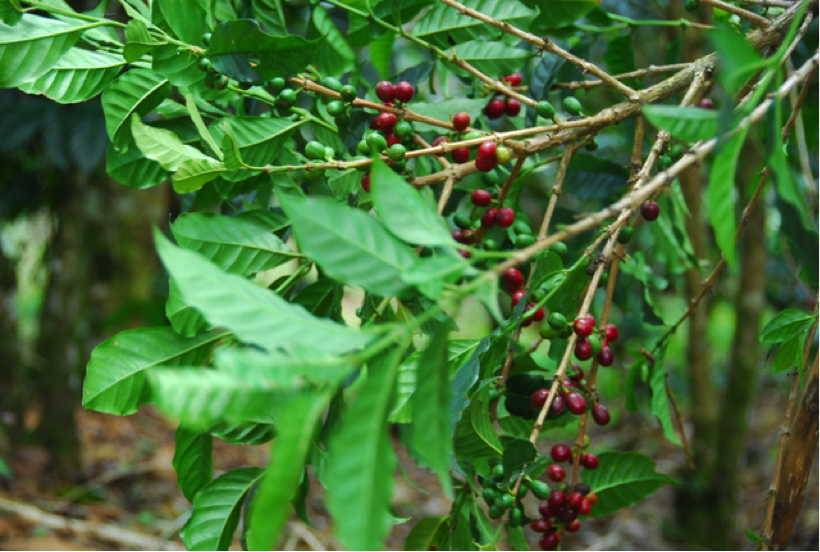
They have a nursery filled with baby Bourbon, Typica and Pacas plants. They picked fruit from their most productive trees to develop the seed stock for their nursery. Coffee Plantations This year, they will make a new plantation at 1800-1850 meters in the cleared space to the right of the roof in the photo on the left. 5 years ago Natividad made a plantation of Lempira, the Honduran catimor hybrid. Beneficio San Vicente (our exporter contact) begged him not to plant Lempira, because cup scores would never get above 85 points. 5 years later, as predicted, cup scores are low but the productivity is high. Natividad will not plant Lempira again.
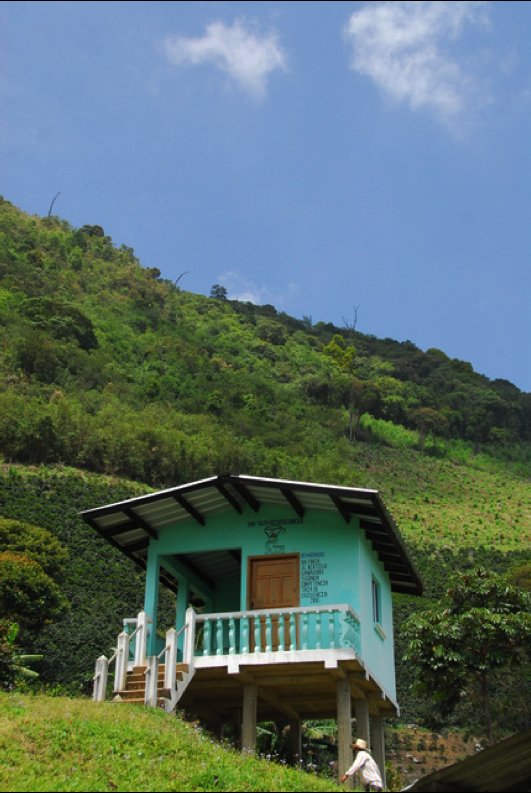
I asked the question, "What do you need more of?"
"Fertilizer" was their response.
Fertilizer is a cost they pay every year, and costs are higher this year. They use a blend of nitrogen, phosphorus and potassium. This year they could only afford one application of fertilizer. They are trying to get more labor to dig out around the base of the tree in order to put it into the ground. (If they simply sprinkle it on the ground it just washes away with rain). Fertilizer strengthens the disease resistance of the trees. This year, productivity of the farm is down 40% due to roya (leaf rust).
What are the fertilizer costs? It is powder, sold by the bag. 8 bags = 1 application per manzana = $200. $800 for 2 manzanas 2 applications. They plan to fertilize well this coming year, in hopes of boosting their production back up to 50 quintales. We computed that the fertilizer cost to the farmer is about 22 cents per pound of green coffee.
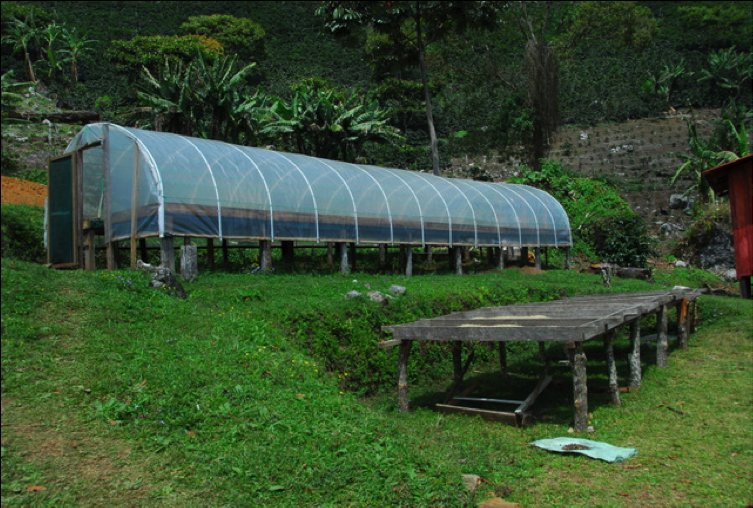 Coffee is dried in parchment in parabolic solar driers (left) or in direct sun (right).
Coffee is dried in parchment in parabolic solar driers (left) or in direct sun (right).
Recent studies have determined that the rate at which the coffee is dried has a significant impact on how the coffee flavor will stand up over time.
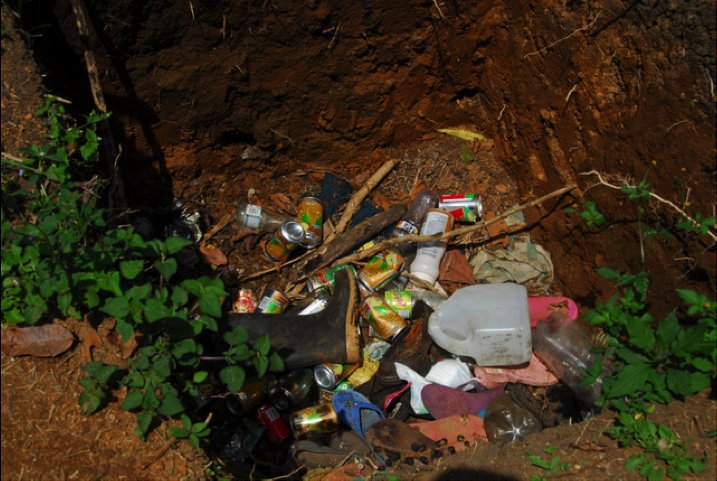
Unfortunately, there is no curbside garbage or recycling program so household waste goes into a deep hole. Litter on these farms is a problem. Food security - having limited access to affordable, nourishing food - is a greater problem.
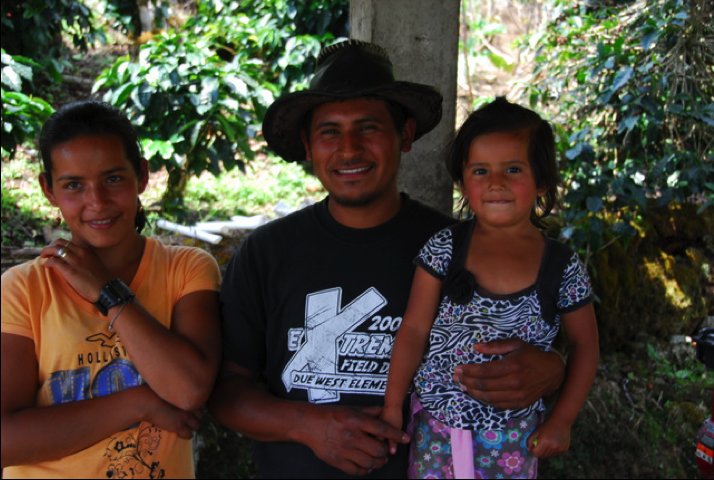
Here's your Las Peñitas farming family. Committed to quality, working hard, and building their future in coffee.

